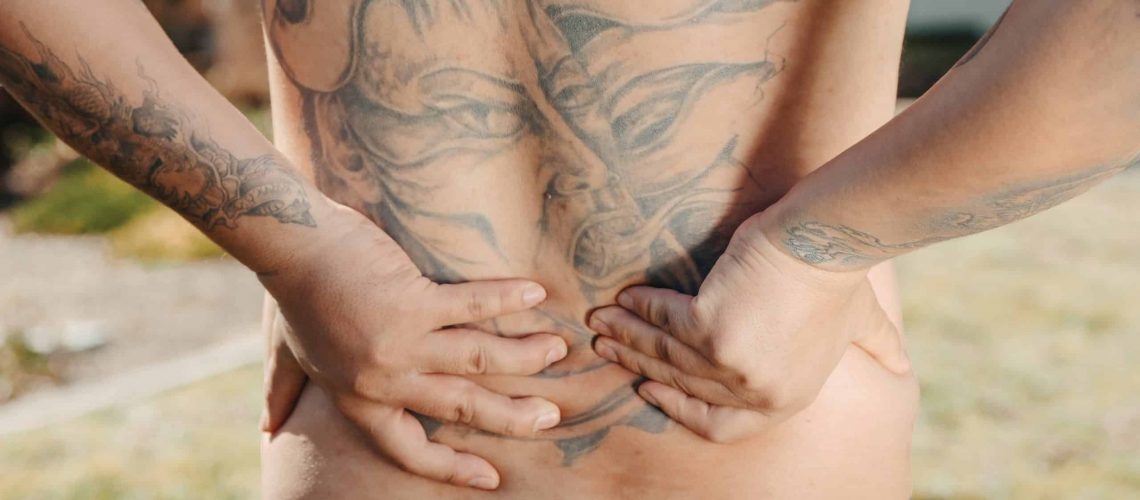A hip fracture is a break in the upper portion of the femur bone(thighbone). While hip fractures can occur in younger patients, older people whose bones have weakened generally end up with a fractured hip.
Hip fractures are painful and, with added complications, can be life-threatening. Several factories increase the risk of fracturing a hip with age and almost always require surgical replacement or repair and physical therapy afterward.
We will review some of the symptoms, causes, what will increase the risk of a hip fracture, and the best ways to mitigate your risk.
Contents
Symptoms
If you are experiencing any of the following symptoms, you may have a hip fracture. The signs and symptoms of a hip fracture include:
- Being unable to get up from a fall or walk
- Having severe pain in the groin or hip
- Being unable to put weight on the leg of the side of the injured hip
- The leg is shorter on the side of the injured hip
- Swelling and bruising in or around the hip area
- The leg turns outward on the side of the injured hip
Causes
Usually hip fractures happen from a severe impact such as a fall or a car crash. People with weaker bones may fracture a hip when simply twisting or standing on their leg.
High-Risk Factors
Various risk factors increase the chance of a hip fracture.
1. Your Sex and Age
As people age, their bone density in muscle mass tends to decrease. Older people may also have problems with their balance and vision, increasing the risk of falls.
Women experience hip fractures three times more often than men do. Women also lose bone density faster than men, partly because the drop in estrogen levels that occurs with menopause speeds up bone loss.
2. Medical Conditions
You will have an increased chance of a hip fracture if you have the following medical conditions.
- Osteoporosis is a condition that weakens bones and increases the possibility of them breaking more easily
- Thyroid conditions like an overactive thyroid can lead to fragile bones
- Intestinal disorders that reduce the absorption of vitamin D and calcium may also we can bones
- Issues with balance, such as strokes, Parkinson’s disease, and peripheral neuropathy, may increase the risk of falling. Also, having low blood pressure or low blood sugar may contribute to the risk of falls
3. Medications That Increase Risk
Certain cortisone medications, such as prednisone, may weaken bones when taken long-term. Other combinations of medication which may cause dizziness also increase the risk of falling. Some of the most common drugs associated with balls include antipsychotics, sedatives, and sleep medications.
4. Nutritional Deficiency
Individuals lacking calcium or vitamin D in early childhood develop less bone mass which increases the risk of fracture later in life. Vitamin D and calcium is essential in maintaining bone density. Another factor that contributes to the risk of bone loss is being underweight.
5. Lifestyle Practices
Lack of regular exercise or weight-bearing exercise may result in weaker muscles and bones, which increases the chances of falling and fractures.
Alcohol and tobacco also interfere with the normal processes of bone building and maintenance, which results in bone loss.
6. The Dangers Of A Hip Fracture
Individuals who experience a hip fracture may experience reduced independence. If someone with a hip fracture is unable to move for an extended period, other complications may include:
- Bedsores
- Blood clots in the lungs or legs
- Pneumonia
- Loss of muscle mass and mobility
- Death
7. Ways To Help Prevent A Hip Fracture
Healthy lifestyle choices are essential to building peak bone mass and reducing the risk of osteoporosis later in life. Making healthy choices at any age lowers the risk of falls and improves your overall health.
The best way to avoid falls and maintain healthy bones is to:
-
- Exercise regularly to improve your balance and strengthen your bones. Weight-bearing activities like walking will help maintain peak bone density. A regular exercise routine will increase overall strength and mitigate the risk of falling. Balance training is another crucial factor that will help to reduce the risk of falling as the ability to balance tends to deteriorate with age.
- Ensure that you get enough vitamin D and calcium. Have your doctor check your levels to ensure that you are taking enough.
- Avoid excessive drinking and smoking. Alcohol and tobacco use may reduce bone density. Alcohol consumption can also impair your balance and increase the risk of falling.
- Have your eyes examined regularly. Please check your eyes every year or more often if you have eye disease or diabetes.
- Use a supportive walking device when necessary. If you feel unsteady, use a walking stick, walker, or cane to help you. Also, consider working with a doctor or occupational therapist to help you strengthen your body or develop a therapeutic plan.
If you are experiencing pain in your hip, whether it is osteoarthritis of the hip, an injury or you have a fractured hip, it is critical to consult with an experienced orthopedic surgeon.
Do You Have A Fractured Hip? We Can Help!
At Thunder Basin Orthopaedics and Sports Medicine, we offer individualized treatments plans and our experienced, compassionate team of physicians and staff treat everything from sports injuries, joint issues, and chronic or acute conditions. Contact us today, and we will help get you moving again and on the road to recovery.


